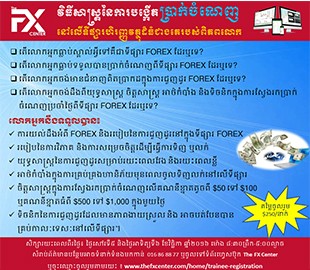Before we delve into the advantages of trading Forex, let’s look at some simple concepts first.
Reading a Forex Quote
The eight most commonly traded currencies are:
- USD (US dollar)
- EUR (Euro)
- GBP (British pound)
- AUD (Australian dollar)
- JPY (Japanese yen)
- CHF (Swiss franc)
- CAD (Canadian dollar
- NZD (New Zealand dollar)
The eight most commonly traded currencies form the seven major currency pairs. These seven majors dominate the Forex market in terms of traded volume. These seven major currency pairs are:
- EUR/USD – Euro vs. US dollar
- USD/JPY – US dollar vs. Japanese yen
- GBP/USD – British Pound vs. US dollar
- AUD/USD – Australian dollar vs. US dollar
- USD/CHF – US dollar vs. Swiss franc
- USD/CAD – US dollar vs. Canadian dollar
- NZD/USD – New Zealand dollar vs. US dollar
Forex prices are quoted in currency pairs, and almost always in four decimal places. For example, if a Forex quote is given as GBP/USD= 1.6550, then the currency on the left is termed the ‘base currency’ while the currency on the right is termed the ‘counter currency’. The base currency always has a value of 1.
In this example, the British pound (GBP) is the base currency while the US dollar (USD) is the counter currency. This is how we would read the Forex quote:
“GBP 1 is equivalent to USD1.6550 at that point of time.”
This Forex quote tells us two things. Firstly, if a trader is keen to purchase 1 unit of the base currency, he would have to pay USD1.6550 to buy GBP1. On the other hand, if a trader is keen to sell 1 unit of the base currency, he would receive USD1.6550 for selling GBP1.
Secondly, it is important for us to take note that the exchange rate will always fluctuate with changing market conditions. At any time, the pound can weaken or strengthen against the dollar. For example, if the GBP/USD quote moves up from 1.6550 to 1.6580, it tells us that the pound is strengthening against the dollar. If, however, the GBP/USD quote moves down from 1.6550 to 1.6475, it tells us that the pound is weakening against the dollar.
Long and Short
The objective of Forex trading is to exchange one currency for another in the expectation that the price will change, so that the currency you bought will increase in value compared to the one you sold.
If you go ‘Long’ on GBP/USD, you are expecting the value of the GBP to rise against the USD.
If you go ‘Short’ on USD/CHF, you are expecting the value of the USD to fall against the CHF.
Pip and Pip Spread
Pip stands for ‘price interest point’. It is the unit of measurement to express the change in value between two currencies. Let’s say that the current EUR/USD price is 1.3765. If the price rises to 1.3766 or falls to 1.3764, this is a movement of 0.0001, or 1 pip. One pip is thus the smallest change in value for any given Forex quote.
Pipette
Many brokers today extend Forex quotes beyond the standard four decimal places to five. For example, a broker could quote USD/CAD as 1.00583. If the USD/CAD quote rises to either 1.00584 or falls to 1.00582, the movement is termed 1 pipette. The value of 1 pipette is 0.1 pips.
Bid/Ask Spread
All Forex quotes include a two-way price, the bid and the ask. The bid is the price in which the dealer is willing to buy the base currency in exchange for the counter currency. This means the bid is the price at which you, the trader, will sell.
The ask is the price at which the dealer will sell the base currency in exchange for the counter currency. This means the ask is the price at which you will buy.
Three Points in Every Trade
When you execute a position, there are essentially three points in every trade: entry price, profit target and stop loss. The entry price is defined as the price at which a trade is triggered. The profit target is defined as the price where the trade exits with a profit. The stop loss is defined as the price where the trade exits with a loss. Let’s use an example for both a long and a short position.
Long Position
Let’s take the current EUR/USD price as 1.3745. Because you expect the euro to appreciate against the U.S. dollar, you enter into a long position. You decide to take a profit of 30 pips and a stop loss of 30 pips. Once these values are locked down in the broker’s platform, only two things can happen: the trade will hit either the profit target or the stop loss. In this example:
- Entry price = 1.3745
- Stop loss = 1.3715
- Profit target = 1.3775
Short Position
Let’s take the current AUD/USD price as 0.9290. You expect the Australian dollar to fall against the US dollar; hence, you enter into a short position.
You decide to take a profit of 60 pips and a stop loss of 30 pips. Once these values are locked down in the broker’s platform, only two things can happen: the trade will hit either the profit target or the stop loss. In this example:
- Entry price = 0.9290
- Stop loss = 0.9320
- Profit target = 0.9230
The greatest lesson in this segment is this: always put a stop loss for every trade. For most traders, having a profit target is second nature, but hardly anyone thinks about putting a stop loss. The purpose of a stop loss is simple yet critical. It is essentially a level that tells you to exit the trade with an acceptable loss because the trade is not going your way.
Far too many times in my career as a trader and coach, I have seen countless traders blow up their accounts simply because they refuse to put a stop loss for every trade. When it comes to trading the Forex Market, we will never be right all the time. The purpose of a stop loss is to help us, not harm us. Traders run the risk of blowing up their entire account by leaving a trade ‘naked’ (i.e. without a stoploss). Do not adopt this practice.
Interestingly enough, the group of traders who blow up their accounts by not placing a stop loss is also the group that walks away from the Forex Market thinking that it’s risky.
ADVANTAGES OF TRADING THE FOREX MARKET
There are many advantages of trading the Forex Market. Here are the top 13 reasons:
1. 24-hour Market
Unlike any other financial market, the Forex Market is open 24 hours, 5 days a week. There is no waiting for the opening bell. This is ideal for those who want to trade either part- or full-time because you can choose whichever time to enter the market; whether it’s morning, afternoon, evening or in the wee hours.
2. Low Transaction Costs
The retail transaction cost, more commonly known as the bid/ask spread, is typically less than 0.05 percent of the transaction amount under normal market conditions.
3. Not Fixed Lot Size
In Forex, you determine your own lot size. You can trade 0.17 lots, 6.4 lots or 200 lots. It’s up to you.
4. High Liquidity
The Forex Market has a daily average turnover of USD5.3 trillion. As the most heavily traded financial market in the world, it is also the most liquid.
5. High Leverage
In Forex, you can utilize leverage to control a relatively larger contract value with a small deposit. Leverage gives the trader the ability to make good profits while at the same time keeping risk capital to a minimum.
6. Market Transparency
When governments, central bank chiefs, or finance ministers make economic/monetary policies that affect currencies, the announcements are readily available on almost every media imaginable within a few minutes.
7. Total Convenience
All you need to get started in trading Forex is two things: a laptop and an Internet connection.
8. Starting Small
Many brokers today offer minimum account deposits of only USD100. Some are even lower.
9. Profiting from a Bull/Bear Market
In Forex, it is equally easy to buy or sell at any time and there is never any increased fee for selling short.
10. No Manipulation
Many people have the erroneous idea that the Forex Market is rigged or that it can be controlled by some large institutions. The truth is, no single entity can influence prices for an extended period of time– central banks included.
11. Free Accounts, Tools and Software
Most online Forex brokers offer demo accounts to practice trading, along with breaking Forex news and charting service. All free! A demo account means two things: You trade with fake money but prices are LIVE.
12. Recession-proof
The Forex Market is considered recession-proof simply because it is not susceptible to market cycles.
13. Earn Big
If the counter currency is the US dollar, 1 pip is always worth USD10 per lot.























